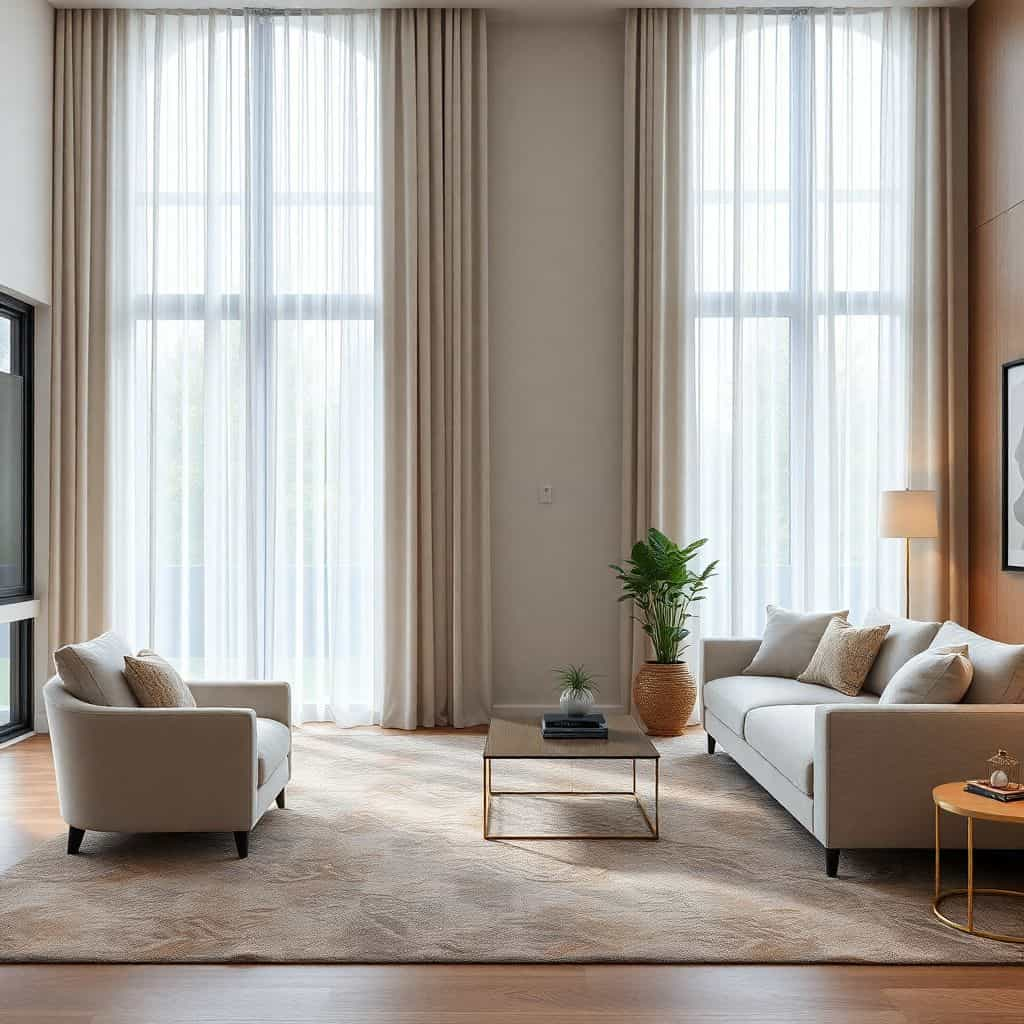The humble curtain and carpet have transcended their traditional roles of merely beautifying homes and offices. Today, they are viewed as critical elements in interior design, playing roles in everything from aesthetic enhancement to sound absorption and energy efficiency. The market for these products is witnessing exponential growth, driven by consumer demand for style and innovation.
Recent studies indicate a marked increase in the adoption of smart curtain technologies that integrate with home automation systems. Companies like Lutron and Somfy have introduced curtains with remote control features that can be operated using smartphones or voice commands via smart home ecosystems like Amazon Alexa or Google Home. These advances highlight the movement towards increased convenience and energy savings.
In the realm of carpets, the innovations are equally exciting. One of the most notable trends is the rise of sustainable materials. Carpet makers are increasingly turning to eco-friendly resources, such as recycled nylon and biodegradable fibers, to meet the demands of environmentally conscious consumers. Companies like Interface have been pioneers, introducing carpets that deliver on performance without compromising ecological standards.
Market analysis shows that carpet sales are particularly strong in regions with colder climates, such as Northern Europe and North America, where they are favored not just for insulation but for their role in enhancing the coziness of homes. In contrast, regions like Southern Asia and the Middle East tend to favor lighter carpets and mats due to their warmer climates.
Pricing trends reveal that while premium carpets and curtains from high-end brands like Hermès or Fendi remain popular among affluent buyers, there is a growing market for budget-friendly yet quality options. Brands such as IKEA and Home Depot have made significant strides in offering affordable products without sacrificing quality, appealing to a broader demographic.
Experts assert that technological advances in manufacturing are key drivers of change in the industry. For instance, 3D printing technology is beginning to make inroads into carpet manufacturing, allowing for highly personalized designs and reduced waste, which can lead to cost savings for consumers.
Historically, carpets have played significant cultural roles, from the renowned Persian carpets that were regarded as the ‘floor of kings’ to the famed red carpets in Hollywood. This rich heritage continues to influence modern designs that often incorporate traditional motifs with contemporary twists.
When it comes to guarantee and purchase assurance, leading brands now offer extended warranties on their products. This practice not only protects the consumer but also signifies the confidence these companies have in the durability of their offerings. Warranties can typically range anywhere from 5 to 25 years, depending on the material and manufacturer.
For consumers looking to find the best deals, the internet is an invaluable resource. Platforms like Amazon and Wayfair frequently provide discounts, particularly during holiday seasons or promotional events such as Black Friday. Subscription-based services and apps that track price reductions can also help savvy shoppers secure the best possible deal.
In conclusion, the world of curtains and carpets is undergoing a fascinating transformation. As new models and innovative technologies emerge, driven by a blend of consumer demand, ecological considerations, and technological advancement, these everyday items are likely to continue to evolve in both function and style. Whether you’re outfitting a new home or refreshing an existing space, there has never been a more exciting time to explore the options this market has to offer.
You may also like
The Evolving World of Curtains and Carpets
Curtains and carpets have long been integral elements of home decor, offering both functional benefits and aesthetic appeal. This article explores the latest trends in curtains and carpets, including technological innovations, market trends, best buys, and the influence of geographic preferences on purchasing decisions.
Modern Bathtub: Symbols of comfort and style
Bathtubs have evolved from basic sanitary fixtures to luxurious symbols of comfort and style. This article dives into the latest trends, innovations, and models in the bathtub industry, providing insights into the current marketplace and offering recommendations for great value products.
Shower Innovations 2025: Latest Trends and Technologies in the Bathroom
As we venture into 2025, the shower industry is brimming with innovations, from zero-threshold showers to smart technologies. This article delves into the newest models, market trends, and the best price-quality offerings available, along with expert opinions and geographical purchasing trends.
Trends in Modern Mirrors
Mirrors have undergone a remarkable transformation in recent years, incorporating cutting-edge technology to enhance their functionality. This article explores the latest trends, innovations, and the best value-for-money options in the mirror market, focusing on LED mirrors, vanity mirrors for bathrooms, backlit mirrors, fitness mirrors, electric mirrors, and more. It also examines global purchasing trends and highlights where to find the best deals.
Bathroom Spaces: Transformation and Innovations for 2025
The bathroom furniture market is on the cusp of a significant transformation as we move into 2025. From cutting-edge designs to luxury innovations, this article explores the latest trends in bathroom furniture, tiles, faucets, and accessories. We’ll delve into regional preferences, emerging technologies, and affordable quality offer to guide the savvy consumer about the best investments for modernizing their bathroom spaces.
